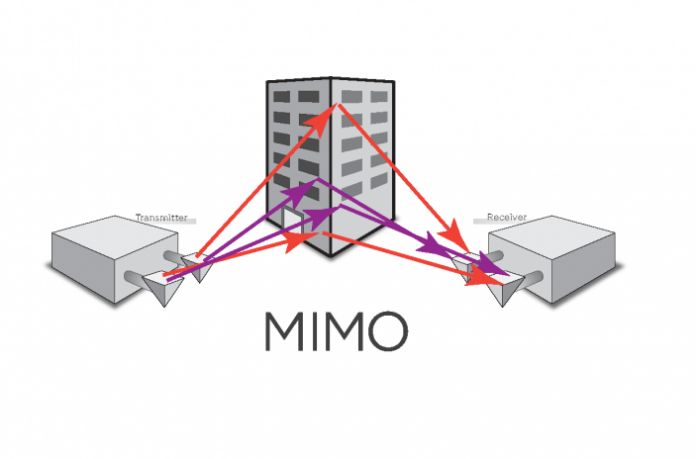NTT DoCoMo and NEC said a recent MIMO test used spectrum between the 3 GHz and 6 GHz bands and showed eight-times gain in spectral efficiency.
Work continues on what is termed “massive” multiple-input/multiple-output antenna technology, with NTT DoCoMo and NEC announcing a recent trial in central Tokyo and Kanagawa Prefecture using spectrum between the 3 GHz and 6 GHz bands.
NEC said the trial used its awkwardly named “low super high frequency” band compatible antenna at the base station in outdoor and indoor locations. The antenna is said to include digitized antenna beam control technology designed to allow for beamforming to counteract interfering signals using multipath technology and improve link quality by combining the multipath with direct waves.
Trial results highlighted improved capacity and quality of communication between the base station and mobile device and showed the ability to maintain spectral efficiency “at a level roughly eight-times higher than that achieved by LTE in indoor environments.”

“We expect NEC to continue pursuing high-speed, large-capacity communication using the low-SFH band and contributing to our commercialization of 5G,” noted Takehiro Nakamura, managing director of NTT DoCoMo’s 5G Laboratory, in a statement.
NTT DoCoMo rival SoftBank late last year said it had upgraded 100 cell sites in Japan with massive MIMO technology, with plans to target “a few thousand sites” this year.
MIMO is seen as an important element of planned “5G” technology deployments, though some carriers are already working on initial deployments in support of current LTE networks. Signals Research Group recently conducted network testing of T-Mobile US’ 4×4 MIMO deployment, which showed a 55% speed boost on a live network using commercial Samsung devices.
The testing was conducted by SRG using T-Mobile US’ network and a pair of Samsung Galaxy S7 devices, one enabled for 4×4 MIMO, the other not. The tests, which used Accuver Americas XCAL-M drive test solution and cooperation from T-Mobile US, found median data rates of 22.8 megabits per second on the device not using the enhanced antenna protocol versus 35.3 Mbps for the device so enabled.
Bored? Why not follow me on Twitter.

